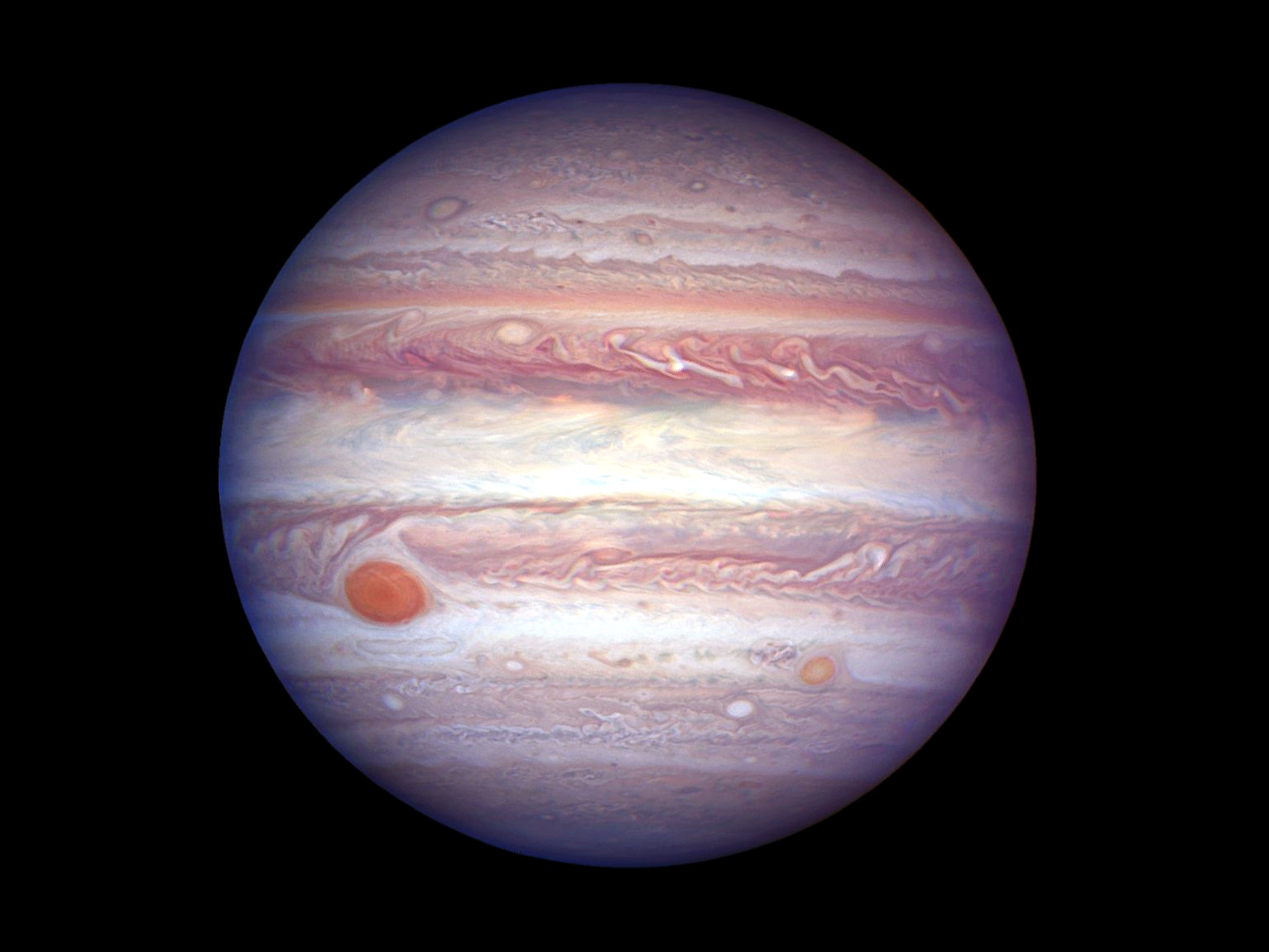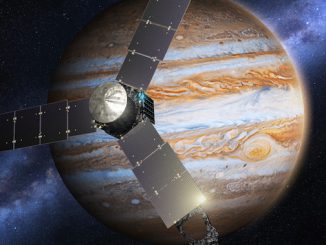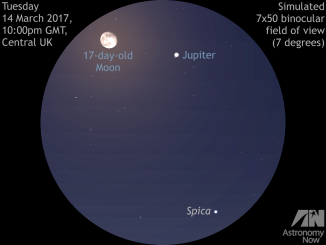
The Solar System’s largest planet is now seven weeks past opposition, but still presents a magnitude -2.3 disc with an angular width of 42 arcseconds. This is means that a telescope magnification of just 45× is sufficient to enlarge it to the same apparent size of an average full Moon as seen with the unaided eye.
Even the smallest telescope (and powerful binoculars, if suitably steadied) will reveal Jupiter’s four largest Galilean moons — Io, Europa, Ganymede and Callisto — in their orbital dance around their parent planet.
With a quality telescope of 3-inch (7.6-cm) aperture or greater at magnifications of 100× and more you can occasionally observe (subject to good seeing conditions) the shadows of these moons slowly drift slowly across the face of Jupiter, like ink-black dots. The timings of the start and end of such events visible from the UK for the remainder of the month are tabulated below. The times that the moons themselves are occulted (hidden) by Jupiter, or pass into or emerge from the planet’s shadow (eclipsed) are also shown.
Jupiter’s Great Red Spot (GRS) puts on an appearance at times suitable for observing from the UK during the remainder of the month, also shown in the table below. The GRS is said to transit when it lies on an imaginary line joining Jupiter’s north and south poles. Owing to the planet’s fast rotation (at the latitude of the Great Red Spot it takes little more than 9h 55m to make one revolution), the GRS is well seen for roughly an hour either side of the transit time. The Great Red Spot has an unmistakable brick red hue at present, making it an easy object to identify in quality telescopes capable of 100× magnification or more when seeing conditions are good.
For observers with 8-inch (20-cm) and larger telescopes, try to see the smaller Oval BA (also shown in the image at the top of the page), popularly known as the “Little Red Spot” — though do bear in mind that it transits the central meridian of Jupiter around 1½ hours before the times given for the GRS. Predictions for the start and end times of Galilean shadow transits, plus information on their eclipses and occultations for any given date in a slightly more user friendly format may also be obtained through our Almanac. To see the satellite events for any given day, ensure that the ‘Add phenomena of Jupiter?’ checkbox is ticked. Like the Great Red Spot predictions, all Galilean moon phenomena events are in Universal Time (UT). For help using the Almanac, see this article.
Predictions for the start and end times of Galilean shadow transits, plus information on their eclipses and occultations for any given date in a slightly more user friendly format may also be obtained through our Almanac. To see the satellite events for any given day, ensure that the ‘Add phenomena of Jupiter?’ checkbox is ticked. Like the Great Red Spot predictions, all Galilean moon phenomena events are in Universal Time (UT). For help using the Almanac, see this article.



